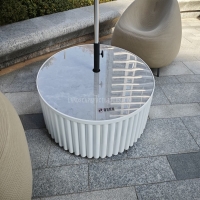Welcome to the website for landscape facilities products and knowledge.
How does the table’s surface interact with electronic devices, such as laptops or tablets?
Modern workspaces revolve around the crucial interface between table surfaces and our electronic companions. While appearing to be a simple physical support, the table's surface actively participates in multiple interactions with laptops and tablets that significantly impact device performance and longevity.
The material composition of your table directly influences thermal management. Solid wood surfaces provide natural insulation, potentially trapping heat from laptop vents, while glass and metal tables offer better heat dissipation but may create uncomfortable working temperatures. Stone surfaces like marble can surprisingly act as natural cooling pads during intensive computing tasks.
Stability and vibration absorption represent another critical interaction. Table surfaces with slight texture or anti-slip properties prevent device migration during typing, while overly smooth surfaces like polished glass may allow tablets to slide with minimal pressure. The firmness of the surface also affects how much vibration from internal fans transfers back into the device.
Electrical conductivity presents both risks and opportunities. Metallic tables can potentially create grounding scenarios, while wooden surfaces provide natural electrical insulation. For tablets with wireless charging capabilities, the distance and material between the device and table surface can influence charging efficiency.
Surface hardness directly relates to device protection. Softer wooden tables may gradually develop impressions from device feet, while harder surfaces like quartz maintain integrity but offer less shock absorption during accidental impacts. The micro-abrasions from daily placement can gradually affect device finishes, making surface texture an important consideration.
Ergonomics and workflow are equally influenced by this relationship. The height and angle at which devices sit on tables affect user posture, while reflective properties of surfaces can create glare on screens. Many users now employ specialized mats that modify the inherent properties of their tables to create optimized interfaces for their specific devices.
Understanding these multifaceted interactions enables users to make informed decisions about their workspace setup, potentially extending device lifespan and improving user comfort through simple surface modifications or conscious table selection.
Related search:

Recommendation
Round metal tube border design table with tempered glass or granite countertop on the top.